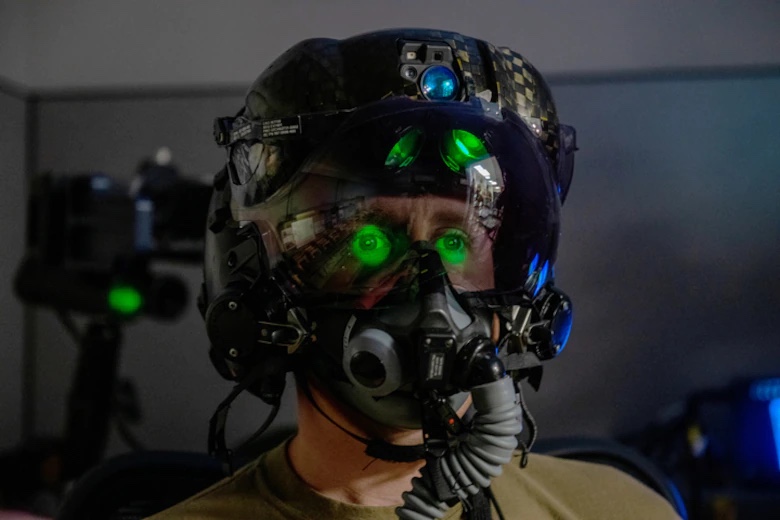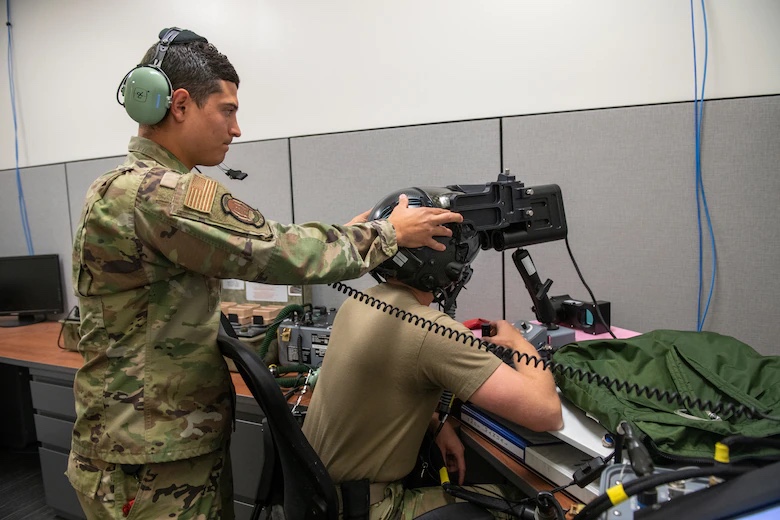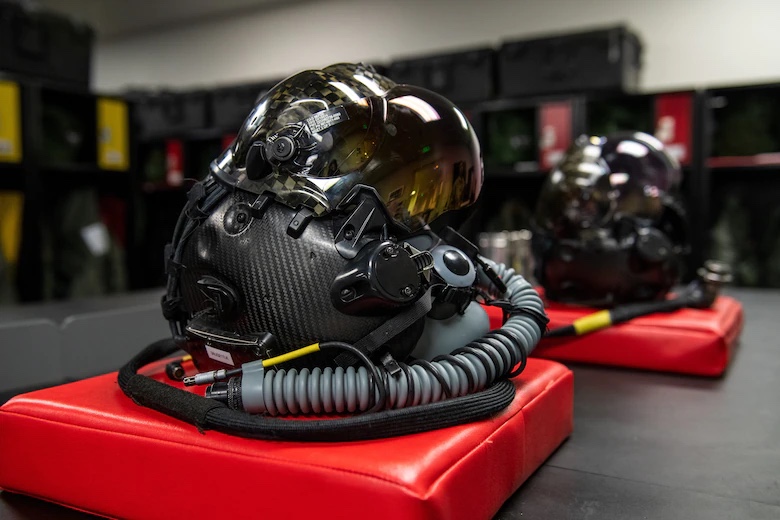HILL AIR FORCE BASE, Utah (AFNS) —
Reservists in the 419th Operations Support Squadron play a crucial role to ensure the safety of pilots assigned to the 419th Fighter Wing, the Air Force Reserve’s only combat-capable F-35 Lightning II unit.

“We are responsible for maintaining and repairing pilot gear to ensure everything is in proper working condition,” said Staff Sgt. AJ Arteaga, 419th OSS aircrew flight equipment Reservist. “That also includes their helmet.”
Every helmet is custom-fitted to its pilot during a two-day process at a fit facility. To begin assembly of the helmet, pilots have their heads measured and scanned to secure the perfect fit.

Once assembled, pilots need to have the optics aligned using a pupilometer, which measures the distance between their pupils within two millimeters of its center, so pilots see a single image on the helmet-mounted display.
On the display, pilots are able to view mission-critical information and obtain enhanced situational awareness of the battlefield simply by moving their head. The helmet gives pilots a 360-degree view of the F-35’s external environment without needing to tip the jet.

“The pilot can look down through a portion of their wing and see what’s below,” said Tech. Sgt. William Vass, 419th OSS. “When they look toward the cameras embedded on the F-35 that image projects onto their helmet display.”
The helmet’s innovative technology and precise fit require routine maintenance so pilots can complete their mission. In addition to pre- and post-flight fittings, the helmet is inspected every 105 days and has a 120-day fit check to ensure its functionality and safety.

“Pilots come in and put on all their gear so we can double-check to make sure everything fits properly and without issue,” Arteaga said. “Small things such as a new haircut or a couple of pounds gained could cause the helmet to not fit correctly.”
Mask adjustments are also included within the helmet fitting. Pilots are sent to an oxygen tester where aircrew flight equipment technicians can identify any leaks around the mask that could prevent adequate oxygen flow.
“The next part is to ensure there is a proper distance between the mask and the visor,” Arteaga said. “We have to make sure when the pilot moves or talks, the mask doesn’t hit the visor. If it’s too close, it will bend the visor and distort the display image.”
Reservists in the AFE shop are an integral part of the helmet-fitting process and maintenance intervals. They verify it remains as precise as possible to guarantee the safety of the 27 pilots in the 419th FW. The work is involved and in-depth, but essential to providing a seamless interaction between the helmets’ advanced capabilities and the exacting skills of the pilot wearing it.
By Senior Airman Erica Webster, 419th Fighter Wing Public Affairs


And then people wonder why F35 is the most expensive jet to buy, maintain and operate…
Is green phosphor still the preferred color for Image Intensifiers in Aviation?
All aviation units have now switched over the L3 Unfilmed White Phosphor.
Even though the “Bone Dome” is 400K a crack, it’s a marvel of technology.